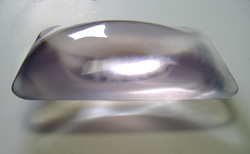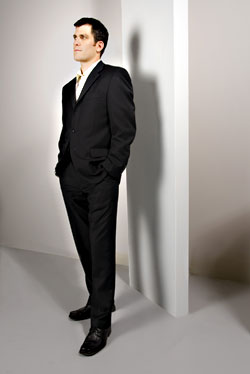The newest art gallery to open in Seattle has been going against the grain. Stepping into the space just off 11th Avenue and Pike Street, away from a row of bad bars and condo developments and a long shot from the nexus of galleries in Pioneer Square, it’s clear that Vermillion is up to something different. In the back, construction is still under way to develop part of the space into a wine bar, and in the front, cold concrete floors and walls that stretch at least 16 feet high set a very, very minimal stage for art.
Physical differences aside, Vermillion has also developed a program that is quite distinct from other galleries’ in town. Between its last show—a brilliant, though overlooked, showcase of photography by Portland-based advertising legend Jim Riswold—and this month’s strong group of drawings, “Hand to Paper,” Vermillion’s focus on narrative art has made for a dramatic debut.
Now, before you roll your eyes, let me assure you that though “narrative” is so often synonymous with diary doodles and the girly trappings of sketchbook stories, founder Diana Adams has already proved she’s not interested in work that’s overly saturated with frivolity. By opening with Riswold, and then washing his slick body of work down with “Hand to Paper,” the work on Vermillion’s walls has debuted as perfectly balanced albeit sometimes painfully raw. It seems that “narrative” in this case also brings with it a heavy dose of reality.
Riswold, who skillfully takes culturally impotent symbols and reloads them with meaning, has been fighting leukemia for seven years. And at just 51 years old, Rick Linville, whose work is some of the best in the current show, died a few months ago from complications of having both hepatitis and diabetes. Whether or not these all-too-heartrending backstories add an edge to Vermillion’s program should be up for debate. What is clear is that Vermillion’s version of narrative is smart and humorous and fittingly drenched in the stuff that makes art so powerful; it feels, in a word, really human.
This month, a colorful mural by Marianne Goldin is playfully juxtaposed with Linville’s Sharpied (yes, as in Sharpie® markers) black-and-white compositions. Both local, little-shown artists, their pieces have affinities. While Goldin explores a glamorous fantasy world, working from fashion spreads and throwing warm washes of color across her precisely rendered sketches of beautiful people, Linville worked from what he knew in life. Closely cropped portraits hang next to shadowed and unadorned apartment interiors. The work is honest, unapologetically employing a vernacular of the everyday both in terms of content and draftsmanship. Deep black lines of the marker create Linville’s all-too-real meditations on the mundane. Framed faces push against the boundaries of the paper, while perfectly ordinary still lifes read both as studies in composition and records of places we’ve all been.
What skillfully unites all the work in “Hand to Paper,” despite differences in content, is how palpably the hand of the artist is captured (hence the title). In Linville’s compositions, we see the scribble of a steady man; in Goldin’s, a youthful freedom comes across as she builds clothes out of color; and in Josh Slater’s work, the Brooklyn-based artist lightens up disturbed content in the sketchy quality of his renderings. Screaming red-faced men mingle with statements like “It’s not so bad.”
That phrase permeates Vermillion’s budding and hopeful aesthetic. Though the space needs a little fine-tuning and the program will need to push its focus on “narrative” as far away from trite as it can, this gallery might just be up to something really good.








